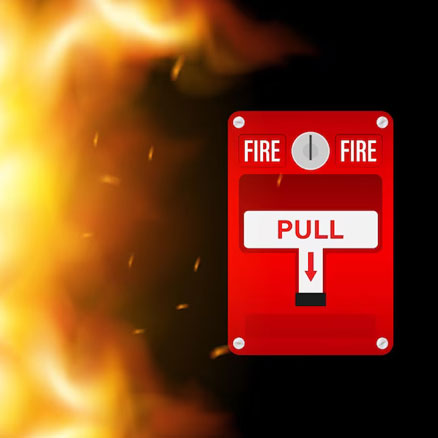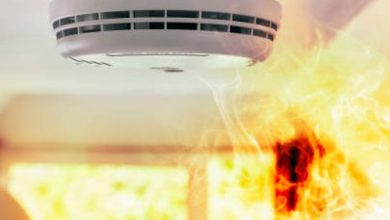
Installing a Fire Alarm Panel is a vital task in safeguarding your building, assets, and occupants from potential fire hazards. Whether it’s a commercial property, an industrial space, or a residential complex, a well-installed fire alarm system ensures early detection and timely evacuation. At Sri Triveni Crafts, we offer high-quality fire alarm solutions along with professional installation services to meet your building’s safety requirements. In this comprehensive guide, we’ll walk you through the step-by-step process of installing a fire alarm panel.
Why Proper Installation of a Fire Alarm Panel is Essential
The Fire Alarm Panel functions as the central control hub for the entire fire detection system. It collects signals from connected devices like smoke detectors, heat detectors, and manual call points. Once an emergency is detected, it activates audible and visual alarms to alert occupants. A properly installed panel guarantees quick response times, compliance with safety regulations, and peace of mind.
Pre-Installation Planning
1. Conducting a Thorough Site Survey
Before beginning the installation process, it is crucial to perform a detailed assessment of the building. Start by identifying high-risk zones, such as kitchens, storage areas, or electrical rooms. Additionally, analyze the building layout to determine strategic locations for installing detectors, call points, and sounders. Choosing the optimal place to install the Fire Alarm Panel is also important; ideally, it should be near the main entrance or security office for easy monitoring.
2. Choosing the Right Fire Alarm Panel
Selecting the appropriate panel depends on the building’s size and complexity.
- Conventional Panels are best suited for small to mid-sized premises. They are cost-effective and monitor specific zones, but pinpointing the exact location of an alert can be challenging.
- Addressable Panels, on the other hand, are ideal for larger facilities. Each device has a unique address, making it easier to locate the source of an alarm quickly and accurately.
At Sri Triveni Crafts, we offer a wide range of both types of systems, designed to meet diverse safety needs.
Step-by-Step Fire Alarm Panel Installation Guide
Step 1: Gather Tools and Materials
To begin, make sure you have all the necessary equipment ready. You will need:
- A drill machine
- Screwdrivers
- Wire strippers
- Fire-rated cables
- Mounting brackets
- Safety gear such as gloves and goggles
Step 2: Mount the Fire Alarm Panel
Next, install the Fire Alarm Panel in an accessible area, preferably on a flat wall in a secure room. Use the appropriate mounting hardware to secure the panel. Ensure it’s placed at eye level so that it can be easily monitored and maintained.
Step 3: Install Detection Devices
After mounting the panel, install smoke and heat detectors throughout the building. Pay special attention to high-risk areas. Follow the manufacturer’s placement recommendations to maximize detection efficiency. At the same time, position manual call points near exits and in areas with frequent foot traffic.
Step 4: Run and Secure the Wiring
Now it’s time to run the necessary cabling. Always use fire-rated cables to connect detectors, sounders, and manual call points to the panel. For safety and organization, route the cables through conduits. Label each wire to simplify future maintenance and troubleshooting.
Step 5: Connect the Devices to the Panel
Once the cabling is in place, connect the devices to the fire alarm panel according to the wiring diagram provided by the manufacturer. Make sure all connections are secure and check that the power supply is properly grounded to prevent electrical faults.
Step 6: Power Up and Configure the System
With all connections completed, power up the panel using the main power source and backup batteries. Configure the panel settings to reflect the layout and specific requirements of your building. For addressable panels, assign unique addresses to each device.
Step 7: Test and Commission the System
Finally, conduct a thorough test of the entire system. Trigger alarms manually and by using detectors to verify that the system responds appropriately. Confirm that notifications, sirens, and strobes activate as expected. If you encounter any faults, resolve them before commissioning the system for regular use.
Post-Installation Maintenance and Best Practices
Schedule Regular Maintenance
Routine inspections are key to ensuring your system stays in working order. Clean detectors regularly, check for dust buildup, and test alarm signals monthly. Don’t forget to inspect the battery backup system and replace batteries when necessary.
Provide Staff Training
Educate employees and building occupants on how to respond in case of a fire alarm. Conduct regular fire drills and show them how to activate manual call points if they detect a fire.
Why Sri Triveni Crafts?
At Sri Triveni Crafts, we provide comprehensive fire safety solutions. Our high-quality fire alarm panels, professional installation services, and maintenance packages ensure the protection of your building and its occupants. To explore our full range of fire alarm systems, visit at Sri Triveni Crafts.
Conclusion
Installing a reliable Fire Alarm Panel is one of the most important steps toward securing your property from fire hazards. By following this step-by-step guide, you can ensure your system is installed correctly and functions efficiently. For expert installation services and high-quality fire alarm systems, trust Sri Triveni Crafts. Visit us today at https://www.sritrivenicrafts.com/ to learn more.
Frequently Asked Questions (FAQs)
1. How long does it take to install a fire alarm panel?
The installation process typically takes one to two days, depending on the complexity and size of the building.
2. Do I need a professional to install a fire alarm panel?
Yes. A certified professional ensures that the system is installed correctly, complies with regulations, and functions reliably.
3. How often should a fire alarm system be tested?
You should test the fire alarm panel monthly. Additionally, have it inspected by a qualified technician every six months.
4. Can I expand my fire alarm system in the future?
Absolutely. Many modern systems, particularly addressable panels, are designed for easy expansion as your building grows.
5. What factors affect the cost of installing a fire alarm panel?
The cost depends on factors like building size, system type (conventional or addressable), and the number of detection devices required.




